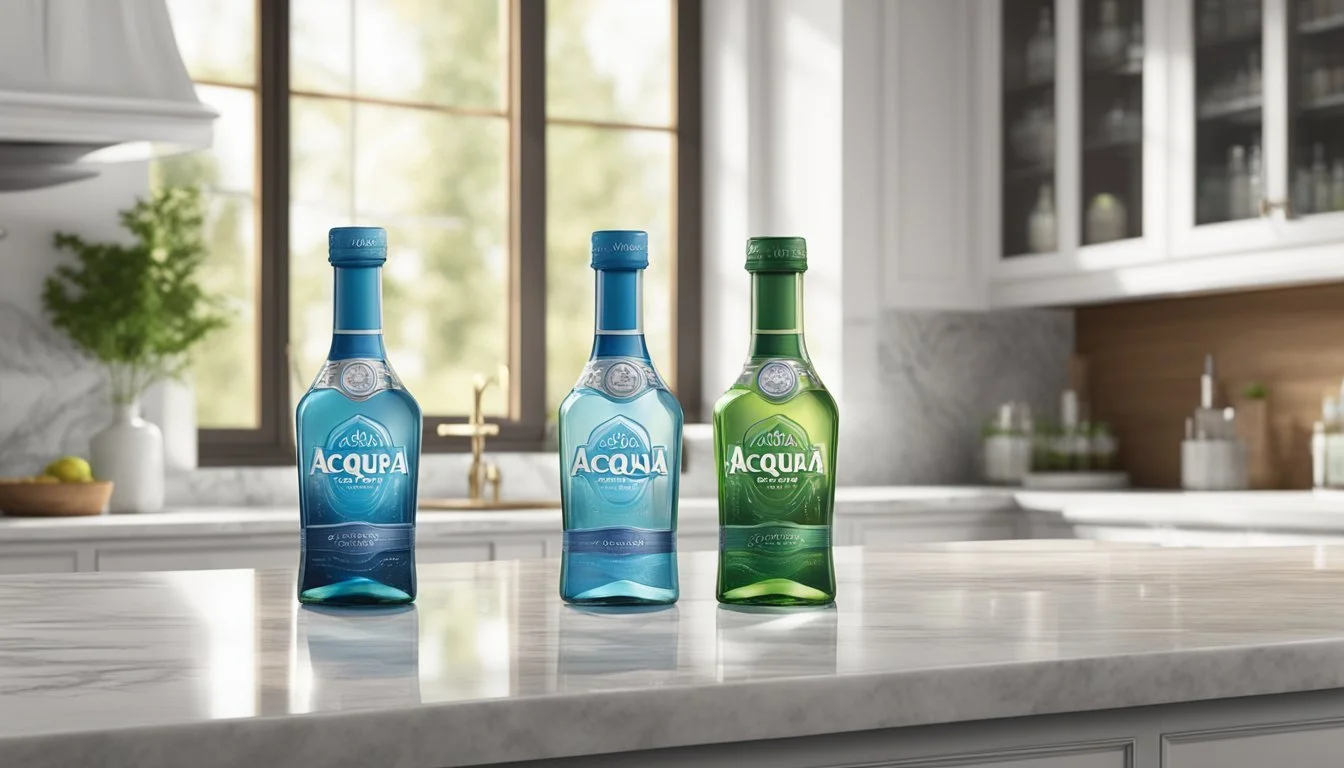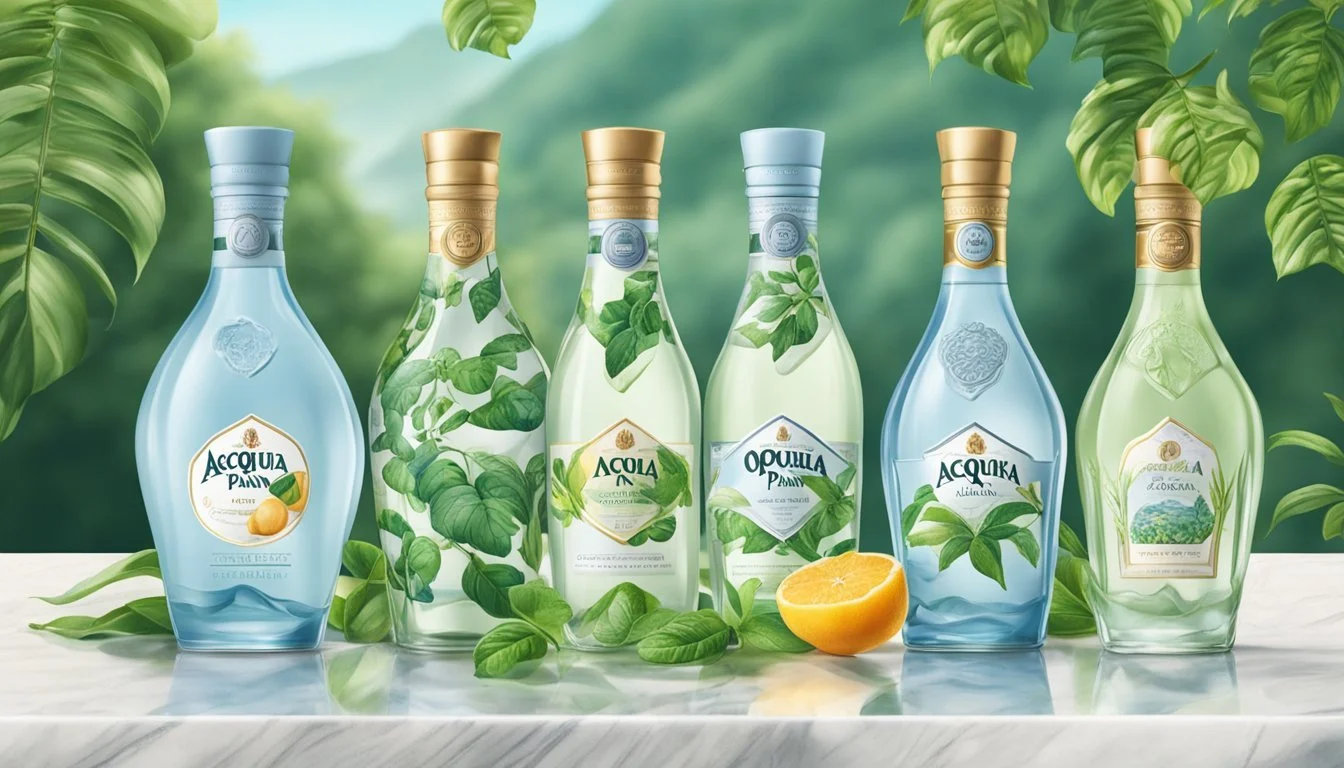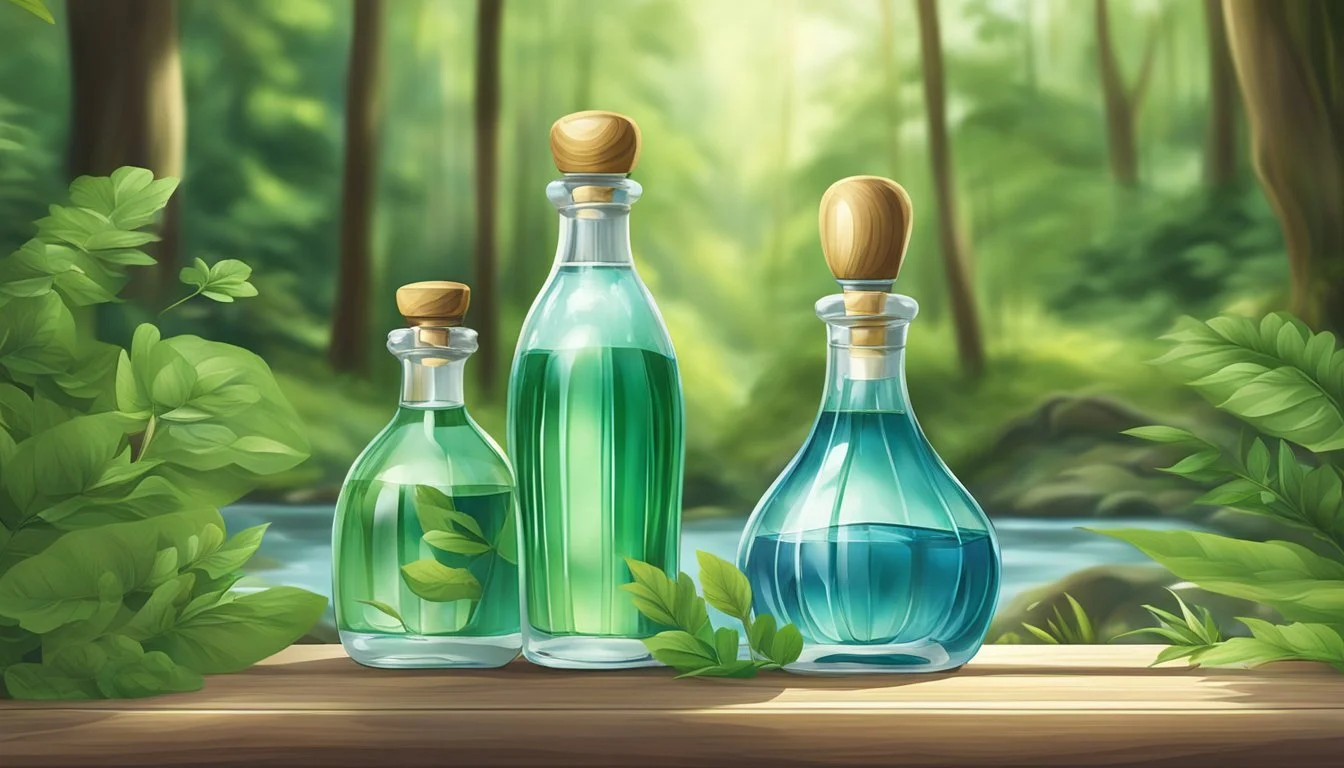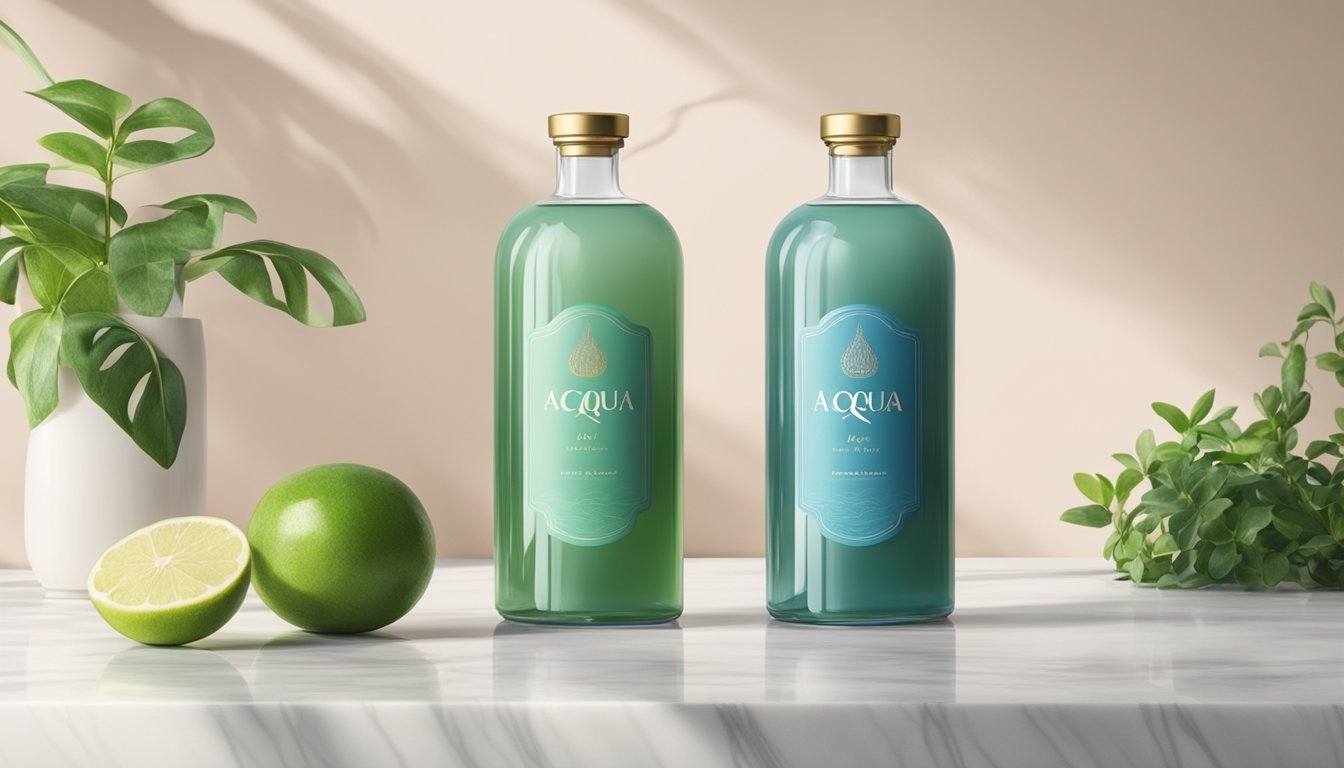Acqua Pana vs. Ophora
Detailed Comparison of Bottled Waters
When deciding between Acqua Panna and Ophora, the choice hinges on specific preferences for taste, health benefits, and sustainability. Acqua Panna, originating from the serene Tuscan springs, boasts a neutral pH balance of around 8.0, which is beneficial for those aiming to maintain a balanced dietary pH. It offers a smooth and refreshing taste, making it a favored choice among bottled water enthusiasts.
Ophora, on the other hand, is known for its advanced purification process and oxygenation technologies. It is specifically designed to enhance hydration and wellness, making it a unique contender in the premium bottled water market. For those seeking a healthier and more oxygen-rich hydration experience, Ophora is the superior choice.
Both waters have their unique selling points: Acqua Panna with its classic taste and balanced pH, Ophora with its health-focused innovations. Choosing the better bottled water ultimately depends on whether one values tradition or innovation in their hydration habits.
Understanding Bottled Water
Bottled water is a popular choice for many due to its convenience and perceived purity.
Sources of Bottled Water: Bottled water can originate from various sources. These include natural springs, aquifers, and even municipal tap water. Spring water is drawn from underground formations, while mineral water contains naturally occurring minerals.
Filtration Processes: The filtration process is crucial for ensuring the water's purity. Many brands utilize advanced filtration methods to remove impurities. These methods can include reverse osmosis, UV filtration, and carbon filtering.
Types of Bottled Water:
Spring Water: Sourced directly from springs, often containing natural minerals.
Mineral Water: Contains specific amounts of minerals and is also sourced from natural springs.
Purified Water: Often sourced from tap water, purified through extensive filtration.
Water Brands and Purity: Different water brands offer varying levels of purity and mineral content. For instance, Acqua Panna is sourced from Tuscany's natural springs, providing a neutral pH and balanced mineral content.
Bottled Water vs. Tap Water: Many opt for bottled water over tap water for its perceived safety and superior taste. However, tap water in many regions undergoes strict testing and filtration, making it a safe and cost-effective alternative.
Convenience Factor: The primary appeal of bottled water lies in its convenience. It is easily accessible, portable, and often available in various sizes to suit different needs.
The bottled water industry has grown significantly, with many brands competing to offer the purest and most refreshing options. This provides consumers with a wide range of choices to meet their hydration needs.
History and Origin
Acqua Panna and Ophora have distinct histories that shape their unique qualities. Acqua Panna's roots lie in the hills of Tuscany, while Ophora focuses on pioneering hydration technology.
Acqua Panna: From Tuscany to Tables
Acqua Panna originates from Tuscany, Italy, and is named after Villa Panna, a historic estate. The natural spring was first discovered in this region by the Medici family during the Renaissance. This water was first bottled in 1880.
Source: The water flows through the untouched hills of Tuscany, which contribute to its unique mineral balance. The brand emphasizes its heritage and purity, providing a smooth taste that is often associated with fine dining experiences.
Ophora: Innovation in Hydration
Ophora Water uses cutting-edge technology to enhance natural sources. Unlike Acqua Panna, which focuses on its historic and regional roots, Ophora employs advanced filtration and oxygenation processes, aiming for maximum hydration and purity.
Technology: Ophora incorporates methods like micro-clustering and high levels of dissolved oxygen to deliver water that is incredibly hydrating. It is designed for both everyday consumption and performance hydration, appealing to health-conscious consumers who prioritize scientifically backed benefits.
Water Quality and Composition
The assessment of water quality and composition in bottled water revolves around analyzing mineral content, pH levels, and filtration techniques. Both Acqua Panna and Ophora boast unique characteristics due to their distinct sources and processes.
Analyzing Mineral Content
Acqua Panna, sourced from Tuscany, is known for its balanced mineral profile. The water contains essential minerals like calcium and magnesium. These contribute to its smooth taste and potential health benefits, such as supporting bone health.
Ophora, marketed as nutrient-rich, integrates electrolytes and trace minerals. Ophora emphasizes a proprietary blend that includes sodium, potassium, and other micronutrients, aimed at optimizing hydration and cellular function. This results in a more tailored water experience for those seeking mineral-rich hydration.
Mineral Acqua Panna (mg/L) Ophora (mg/L) Calcium 32 Variable Magnesium 8 Variable Sodium 6 Variable Potassium Trace Variable
pH Level Considerations
The pH level of water impacts its taste and suitability for different consumers. Acqua Panna has an alkaline pH of around 8.0, which is believed to neutralize body acidity and promote overall well-being. This higher pH gives it a smooth, velvety feel, appealing to those seeking mild alkaline water.
Ophora similarly maintains an alkaline pH, usually ranging from 8.5 to 9.5. The higher alkalinity is promoted for its supposed health advantages, including improved hydration.
Drinking water with a balanced pH can be crucial for individuals sensitive to acidity or those pursuing alkaline water benefits.
The Role of Filtration Techniques
Acqua Panna’s filtration process capitalizes on its natural source, filtering through limestone terrain, which imbues it with minerals while removing impurities. This natural filtration ensures a clean yet mineral-rich composition without additional processing.
Ophora, on the other hand, uses advanced filtration methods including reverse osmosis and oxygenation. This multi-step process is designed to eliminate contaminants and enhance water purity. It also allows the reintroduction of essential electrolytes, thereby providing a cleaner yet enhanced mineral composition.
Both brands emphasize filtration's role in ensuring the purity and quality of the water while retaining or enhancing mineral balance.
Taste Profile
Acqua Panna and Ophora offer contrasting taste experiences influenced by their unique sources and mineral compositions.
Flavor Nuances of Acqua Panna
Acqua Panna, sourced from Tuscany, is renowned for its smooth taste. The water is slightly alkaline, with a pH of around 8.0, contributing to its soft and clean flavor.
The extended filtration through the aquifer imparts subtle mineral notes, enhancing its overall smoothness. This process results in a water that is not just refreshing but also gentle on the palate, free from any notable bitterness or aftertaste.
Ophora's Unique Taste Experience
Ophora water stands out for its oxygen-rich composition. Enhanced with additional oxygen, this water has a crisp and invigorating flavor. Its clean taste profile is a result of a meticulous purification process that removes impurities while retaining essential minerals.
There is a distinct freshness that accompanies each sip, differentiating it from standard bottled waters. Due to these characteristics, Ophora provides a unique and refreshing experience without any harsh flavors.
Health and Hydration
Acqua Panna and Ophora are both renowned brands for their unique offerings in bottled water, focusing on health and hydration.
Acqua Panna comes from Tuscany, Italy, and is known for its neutral pH balance of around 8.0. This makes it a good option for people looking to maintain a balanced dietary pH.
Ophora, on the other hand, offers ultra-purified water enriched with essential electrolytes. This brand aims for enhanced hydration through its high oxygen content, which claims to improve cellular respiration and overall energy levels.
Mineral Content
Acqua Panna: Boasts a balanced mineral profile, making it gentle on the palate.
Ophora: Enriched with a high level of electrolytes, aiding in rapid rehydration and replenishment.
Benefits
Hydration: Both brands excel in providing excellent hydration. Acqua Panna’s natural minerals may offer a more traditional hydration experience. Ophora’s enhanced formula aims at delivering quicker and more effective hydration.
Health: With their different approaches, both brands cater to individuals looking to improve their overall health through better hydration.
In a nutshell, Acqua Panna and Ophora offer distinct benefits in hydration and health.
Environment and Sustainability
When considering Acqua Panna and Ophora, it is crucial to evaluate their environmental impact and sustainability efforts. This includes their carbon footprint and the materials used for packaging.
Carbon Footprint of Bottled Water
The carbon footprint of bottled water is a significant concern. Acqua Panna, bottled at the source in Italy, operates under San Pellegrino. They have implemented several environmental initiatives to reduce their carbon emissions, such as optimizing logistics and improving energy efficiency in their facilities.
Ophora takes pride in using eco-friendly packaging, opting for glass bottles over plastic. Glass is recyclable and has a lower environmental impact compared to traditional plastic bottles. Additionally, Ophora’s commitment to local sourcing minimizes transportation emissions.
Both brands aim to reduce their environmental impact through various sustainability measures, but differences in packaging materials and sourcing practices highlight distinct approaches.
Packaging and Material
Acqua Panna and Ophora take different approaches to their packaging and materials. Both brands prioritize sustainability and quality, although their methods and materials vary significantly.
Bottle Design and Durability
Acqua Panna's bottles are known for their elegant design. They primarily use plastic bottles with a sleek, ergonomic shape. This design makes them easy to hold and pour, enhancing user convenience. Additionally, Acqua Panna offers a variety of bottle sizes, catering to different needs and preferences.
Ophora, however, opts for glass bottles. These bottles are not only aesthetically pleasing but also significantly more durable and environmentally friendly compared to plastic. Glass bottles minimize the risk of chemical leaching and preserve the water's purity. Ophora's emphasis on high-quality glass packaging ensures that their water remains fresh and uncontaminated for longer periods.
Impact of Reusable Glass
Using reusable glass bottles is a significant step towards environmental sustainability. Acqua Panna, while focusing on recyclable materials, does not use glass bottles widely. In contrast, Ophora's commitment to glass packaging highlights their dedication to reducing plastic waste and promoting reuse.
Glass bottles can be sterilized and reused multiple times, making them a sustainable choice. This practice reduces the overall environmental footprint of the packaging. Moreover, reusable glass bottles contribute to a premium feel, enhancing the consumer experience.
The adoption of glass bottles by Ophora reflects a broader industry trend towards eco-friendly packaging solutions. This approach not only appeals to environmentally conscious consumers but also sets a standard for other bottled water brands to follow.
Consumer Preference and Use Cases
Acqua Panna and Ophora appeal to different consumer bases, with each brand bringing distinct qualities that cater to specific use cases and preferences. Analyzing their reception in restaurants and personal consumption patterns highlights these differences clearly.
Restaurant and Fine Dining Selections
Acqua Panna is a staple in fine dining establishments, known for its smooth taste that pairs well with delicate dishes. Chefs and sommeliers often recommend it because its low mineral content does not interfere with the flavors of the food.
Ophora, with its oxygen-infused water, has found a niche in high-end health-focused restaurants. The brand's emphasis on purity and innovative processing appeals to establishments that prioritize wellness.
Both waters are found in elite dining contexts but serve different purposes: Acqua Panna for flavor complementarity and Ophora for health benefits.
Personal Consumption Patterns
For everyday personal use, convenience and preferences shape consumer choices between Acqua Panna and Ophora. Acqua Panna is favored by consumers who value a refined, balanced taste in their daily hydration. Its wide availability makes it a convenient choice for those who prioritize consistent quality.
Ophora attracts health-conscious individuals looking for enhanced hydration benefits. Its specialized processing makes it popular among athletes and wellness enthusiasts.
Price points also influence personal consumption, with Ophora typically being more costly due to its production methods, while Acqua Panna offers a more affordable yet premium water option.
Comparative Analysis
Analyzing the market position and price points of Acqua Panna and Ophora reveals significant insights about their competitive standing and consumer accessibility. Each brand brings unique attributes to the bottled water market.
Market Position: Acqua Panna and Ophora Face-Off
Acqua Panna holds a strong market position, rooted in its rich heritage dating back to 1564, with a source in Tuscany. This brand is widely recognized for its smooth and velvety texture, appealing to consumers who value luxury and refinement in their water.
Ophora, on the other hand, positions itself as a premium brand with a focus on high oxygen content and advanced purification processes. This unique selling point attracts health-conscious consumers seeking enhanced hydration and wellness benefits.
Both brands cater to distinct segments, with Acqua Panna appealing to those who appreciate traditional elegance, while Ophora targets the health and wellness market with its innovative approach.
Price Point and Accessibility
Acqua Panna is generally priced competitively within the premium bottled water category. It is readily available in upscale grocery stores, restaurants, and hotels, making it accessible to a broad audience.
Ophora, due to its specialized production process and health-oriented branding, often commands a higher price. This premium pricing reflects the advanced technology used in oxygenating and purifying the water.
Availability: Acqua Panna enjoys widespread distribution, making it more accessible compared to Ophora, which may be found in select health stores and niche markets.
In summary, while Acqua Panna offers affordability and accessibility, Ophora stands out with its unique health benefits, albeit at a higher cost and limited availability.
Final Thoughts
Acqua Panna is sourced from the hills of Tuscany, known for its smooth and balanced flavor. It maintains a neutral pH level around 8.0, which can be beneficial for those attentive to their dietary pH balance.
In contrast, Ophora offers oxygen-enriched water, aimed at enhancing hydration and cellular function. This can appeal to consumers seeking potential health benefits beyond basic hydration.
Personal preference plays a significant role in choosing between these two brands. Some may prefer the delicate taste of Acqua Panna, while others might be drawn to the unique properties of Ophora.
Health considerations also influence consumer choice. Acqua Panna is prized for its natural mineral content and balanced pH. Ophora markets its product as aiding in detoxification and improved oxygen intake.
Both brands provide high-quality options, making the decision largely dependent on individual taste and health priorities. Consider trying both to determine which suits your needs better.
Comparing price, availability, and marketing claims can also help make an informed choice. Both are premium waters, and their unique features cater to different consumer preferences.
Choosing the right bottled water involves considering various aspects, from taste to health benefits. Reflect on what matters most for your hydration needs, and select accordingly.








